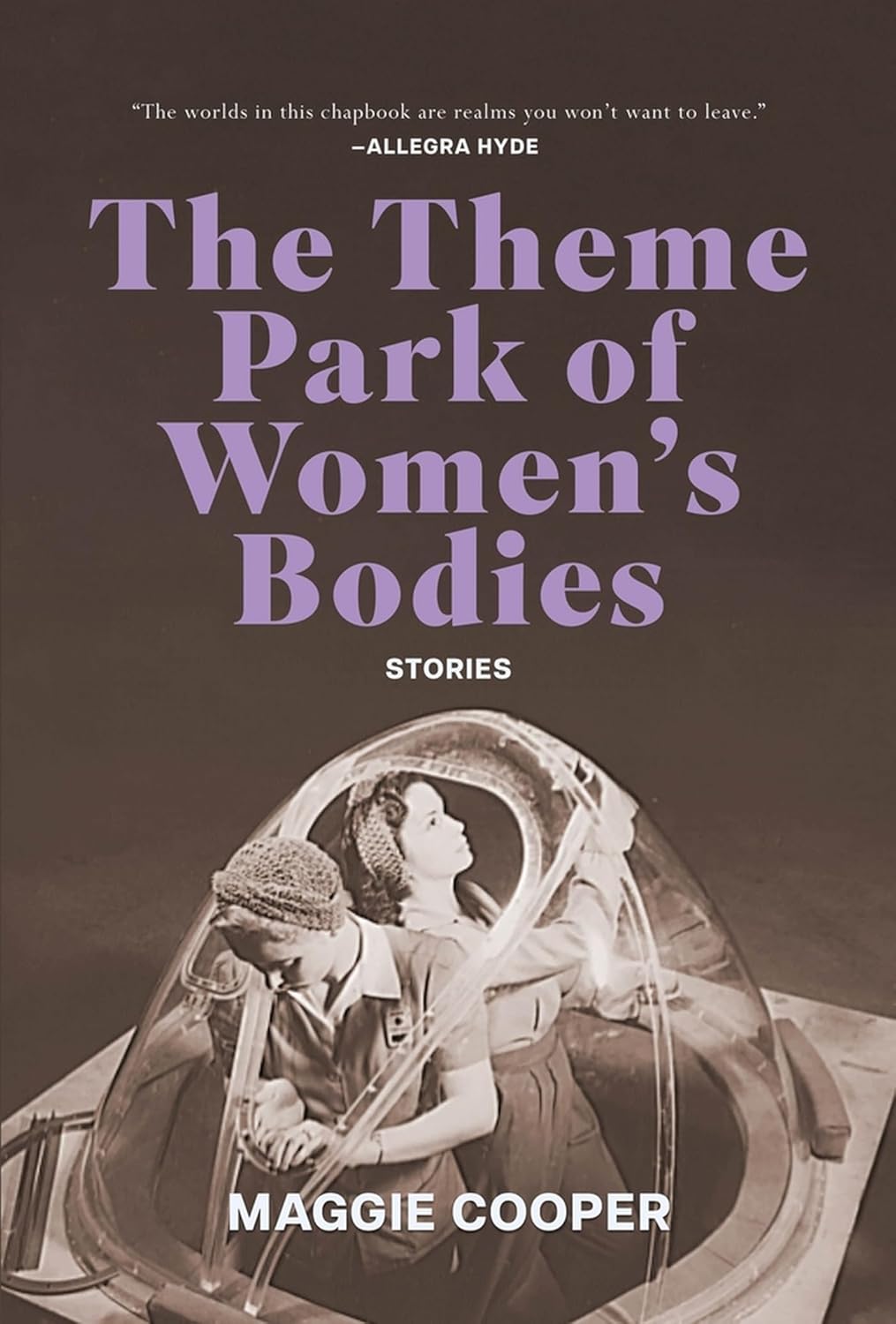Review of The Theme Park of Women’s Bodies by Maggie Cooper

The Theme Park of Women’s Bodies
Maggie Cooper
Bull City Press, 2024, 49 pages
$12.95
Reviewed by Catherine Horowitz
Maggie Cooper’s The Theme Park of Women’s Bodies is a short book of stories, or more accurately, portraits, of a wide variety of fictional environments formed around women. Each story is just a few pages long but depicts an intricate world that is vividly and beautifully imagined: a convent that specializes in making jams, a vast system of caves and the women exploring them, a ship of female pirates who leave their old lives behind, a lush, growing island formed by bodies. Although some stories have characters who develop and change, for the most part, it is entrancing enough just to watch each world unfold and discover its inner workings. It was with reluctance that I moved from story to story, wishing I could remain longer in each.
Cooper masterfully moves between genres, styles, and tones, with each story having a unique voice. Some stories are fantasies, some are dystopian, and some are more grounded in reality with hints of magic or the supernatural. Some read like fables, and some are blunt and conversational. The overall effect is a rich and rewarding reading experience that kept me excited to see what would come next.
Often, one brief detail adds a huge amount of depth and imagery to a story. I found these details often—details like the mention of a cathedral ceiling in “The Cure,” which introduced a huge amount of new context and implications, or a brief remark made by a jaded tour guide at the end of the titular story, which flipped my perception of how much of the tour was officially sanctioned and how much was just commentary. These worlds easily stretch beyond the limits of the pages and raise many unanswered questions, creating opportunities to think more deeply about each story after reading. In this way, The Theme Park of Women’s Bodies is an immensely rewarding and thought-provoking read.
What is The Theme Park of Women’s Bodies trying to say, though? The blurb on the back of the book indicates an intention to “point to the ways that narrowly defined femininity feeds exploitation and violence, inviting readers to consider the breadth of ‘woman’ as a category with a wide-ranging history, present, and future.” This is most successful in “The City,” which at first presents a society of women that seems almost utopian but gradually reveals its limitations and narrow, exclusionary nature, as well as a bit of context about the outside world. Without giving too much away, this story deals with queerness in a way that is interesting and unexpected and leads to more speculation once the story ends.
Of the other stories that more overtly address the theme of narrowly defining femininity and the harm this causes, many depict environments where women are reduced to the acts of giving birth and raising children and where those who don’t—or can’t—face consequences. Other stories center on the harm and exploitation women uniquely face and depict environments that harness this exploitation for a variety of purposes. For the most part, though, these themes aren’t explored in a particularly innovative way or one that differs from other media that addresses these same ideas. Like “The City,” many allude to or overtly address queerness with a broader understanding of the category of ‘woman’ than this book’s older counterparts. However, the motif of queerness generally isn’t factored into the plot or worlds in a significant way—for the most part, it often feels like an added detail without which the story could have easily existed.
But in the end, nothing detracts from what makes The Theme Park of Women’s Bodies a truly memorable, intriguing, and beautifully-written read. What will stay with you is the sticky feeling of jam and sun in vineyards, the dark, damp echo of an ancient cave, the creak of limbs twisting into a tree, the sulfurous scent of a pool of water, and the taste of a red cherry shake.
Catherine Horowitz is a writer and educator living in Washington, D.C. She earned a B.A. in English and Jewish Studies from Oberlin College. You can find her other work in Bright Wall/Dark Room, New Voices, and the Jewish Women’s Archive. She has previously worked with Sinister Wisdom on A Sturdy Yes of People: Selected Writings by Joan Nestle.
"Empowerment comes from ideas."
― Charlene Carruthers
"Your silence will not protect you."
— Tourmaline
"Gender is the poetry each of us makes out of the language we are taught."
— Leila Raven


